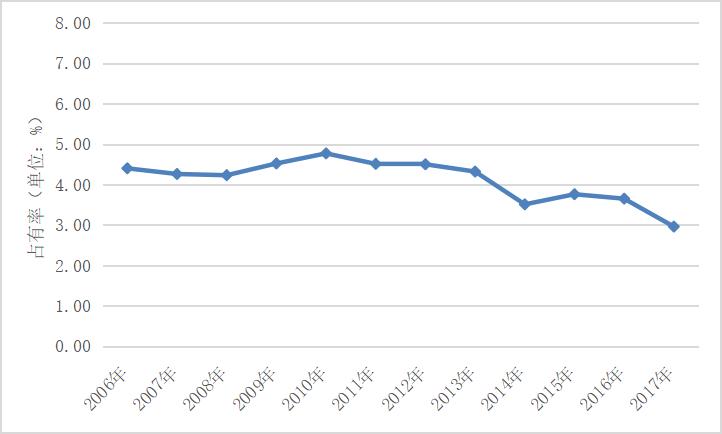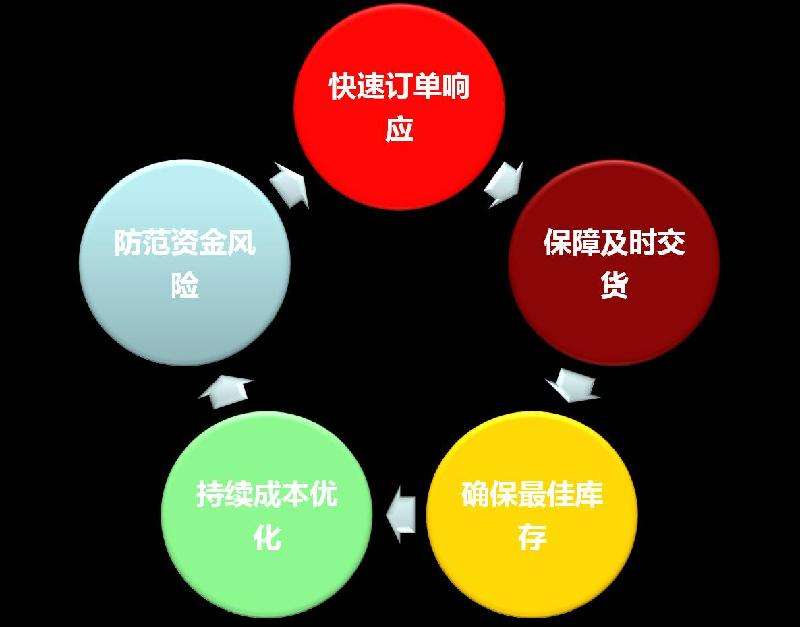苏ICP备112451047180号-6
亚洲公司现金持有量
在本文中,我们分析了企业储蓄的决定因素在现金持有量的变化的形式,以及奥丽安娜数据库2002–2011期的11个亚洲经济体企业级的数据。我们发现一些证据表明现金流量对现金持有量的变化产生积极的影响(即现金-现金流敏感性为正)。这些结果都证实了金融约束在亚洲企业的重要性。此外,我们发现,金融危机后全球现金-现金流敏感性下降,托宾Q值对现金持有量的变化产生积极的影响,特别是在较大融资约束的大公司中。
一、引言
企业储蓄始终扮演着重要的角色,由karabarbounis和Neiman(2012)指出,在过去的2年发达的亚洲经济中,它已经大幅度上升。然而,以往的分析都集中在家庭储蓄(或个人)或国家(或国内)储蓄,对企业(或公司)也已经有相对较少的分析。
在亚洲,高总储蓄率一直被称为“储蓄现金过剩”,被指责为全球金融危机前的“全球失衡”,学者和政策制定者已花费了许多努力,试图了解这个地区的一般储蓄现金行为(例如Horioka和寺萩原,2012),但企业储蓄现金的驱动因素尚未被解开。本文的目的是通过对亚洲企业的储蓄行为的实证分析,填补这一空白。近期文献已经提出了两个公司储蓄现金过高的原因。第一,新兴市场供应有限的金融资产和财务约束。第二,侧重于预防性动机的作用。净资本流出导致预防性储蓄的特质所带来的风险(例如本·希马2008;门多萨,2009;桑德里等人,2010)。这些预防性储蓄模型的不确定性增加,导致企业投资下降,在一些东南亚经济体尤为明显。本文的目标不是直接的论述储蓄过剩,而是通过宏观经济现象了解过程,通过分析企业损益表数据了解企业积累的流动资产或储蓄。特别是,我们好奇为什么企业对现金流动资产(定义为包括现金以及其他金融资产)感兴趣而不是为物质资本(资本形成)或为股东分配(分红)而努力经营。我们还试图确定企业储蓄现金行为是否可以作为一个有用的指标,在一定程度上,企业面临的外部融资约束。
因此,我们专注于企业经济上两个特定的决定因素:收入的不确定性和外部融资成本。通过这样做,我们希望揭示这两个因素,特别是在亚洲的重要性。
在本文中,我们分析了企业储蓄的决定因素在现金持有量的变化的形式,以估计现金-现金流敏感性为焦点。采用GMM方法探求全球金融危机是否对企业储蓄现金行为产生影响。
二、理论思考
在本节中,我们考虑企业储蓄的决定因素。我们的讨论在很大程度上是依赖于阿尔梅达等人的分析。他们还讨论了金融约束的重要性,为企业节省了动力。家庭和企业都是非常不同的经济实体,具有非常不同的目标函数,家庭以家庭消费效用最大化为目标,而企业则是投资工厂和设备的使用,生产商品和服务,创造利润。然而,这两种类型的经济实体之间的许多相似之处。例如,家庭持有现金是为了能在未来满足他们的消费需求,而企业持有现金是用来他们的未来投资。此外,在家庭理财消费选择借贷或抵押他们以前积累的储蓄,企业也选择同样的方式,企业之间的融资投资选择借款,发行股票或通过抵押他们以前积累的储蓄。同时,相同的金融方式(借贷)的约束和影响农户的借贷成本将决定他们的消费,金融(借贷)的限制,融资成本也会影响公司的决定如何投资。
如果企业没有面临融资约束,他们可以通过借贷一样,他们需要在市场利率或发行权益的外部来源,因此他们的工厂和设备的投资融资,不需要在面临投资获利的项目突然出现准备持有金融资产(即项目具有正的净现值)。然而,如果企业面临的融资约束,他们不得不支付比从外部来源融资市场高的利率或发行股票发生各种交易成本,他们可能会选择在任何时候至少持有一些金融资产,以确保他们能够在出现任何有利可图的投资项目时利用从外部借贷的资金或发行股票,从而节省预计未来融资成本。
然而,持有金融资产具有转移成本以及效益。产生的一个成本是持有金融资产的成本,虽然这样做可以从内部来源获得资金,但可能会减少目前的投资。另一个成本是企业持有金融资产必须支付的利息以及持有的金融资产收入税。因此,企业必须保持持有金融资产成本的平衡。
下面我们在这些理论上考虑现金流的敏感性。根据阿尔梅达等人(2004),现金流量的增加将导致企业想增加目前的投资以及未来的投资。一个公司,经济上是否受到约束不一定会增加现金流量,因为它将能够利用外部资金来解决未来的金融投资中的任何困难。因此,现金流量的增加将不会对以现金的形式的资产受到影响;即所谓的“现金—现金流敏感”的约束公司预计将是零。相反,现金流的减少将导致企业想减少当前的投资以及未来的投资。
然而,面临财政约束的公司将使用中的至少一部分的现金使现金流量增加,增加现金持有量,这将能够增加其未来的投资却不依靠外部资金。因此,现金流量的增加将导致财务约束的企业节约更多的以现金的形式的资产;即,现金现金流敏感的财务约束的企业将是积极储备现金的。相反,当一个面临财务约束的公司现金流量减少,它将不能像以前一样保存在未来的投资机会准备现金,因此,它的“现金—现金流敏感度”将在这种情况下为正。
三、估计模型和估计方法
在本节中,基于上一节所讨论的理论思考,我们描述了计量模型以及用于估计模型的估计方法。
基于阿尔梅达等人的研究,我们提出计量模型:
 CHCASHA(i,t)是在现金持有量的变化对总资产的比率;
CHCASHA(i,t)是在现金持有量的变化对总资产的比率;
CFA(i,t)是现金流量与总资产的比率;
Q(i,t)是托宾的Q;
SIZE(i,t)是公司规模的企业;
e(i,t)是误差项。
这个积极的储蓄倾向的预测现金流的财务有限公司主要是基于阿尔梅达et al .(2004)的假设,增加现金流不是伴随着更高的资本生产率。因此,公司没有动力将流动资产转化为实物资产,和增加现金流产生纯粹的积极收入效应储蓄。相比之下,雷迪克和涂白(2009)压力替代效应的重要性。替代效应指的是,公司可以以流动资产的形式节省花费,因为它将一些流动性资产转移到实物资产,相对更有效率。如果这个替代效应占主导地位,储蓄倾向的现金流对财务能力有限的公司的影响将是负面的。
我们试着用两个定义托宾q(q1,市场价格与账面价值的比率,q2,市值的总和和债务与总资产的比率)。然而,结果不是很敏感,我们只报告第一部分的结果。因为托宾的q大概反映了生产率的冲击,积极系数托宾q支持雷迪克 (2009)的研究,积极生产力冲击导致公司资本变得更有生产力和增加现金流。最后,除了评估基线回归(方程1),我们也试着增加三个额外的解释变量(资本支出,营运资金和短期债务),但是因为结果没有显著影响,我们没有显示不显著的结果(具体显示在Horioka和Terada-Hagiwara(2013)的文献中)。
我们估计这个方程使用广义矩量法(GMM),因为很可能有测量误差托宾q。然而,作为比较,我们也试着使用OLS估计方程和法玛提出的方程,麦克白(1973)的文献包括使用OLS估计。
我们做全样本发达经济体和发展中经济体的次级样本,和个人的经济体的估计。此外,来评估全球金融危机,对公司的储蓄行为的影响,我们分析的时间段划分为危机前(2002 - 2007)和危机后(2008 - 2011)。
最后,我们将样本划分为不同的次级样本公司,因为公司规模将是一个很好的代理金融约束的变量。公司规模已被广泛用于衡量金融约束(见阿尔梅达等人2004的研究),变量已经被证明关联密切金融约束水平,如世界商业环境调查(见贝克,2005)。特别是,我们将样本划分为公司的上方和下方的平均,理由是相对较小的公司更有可能将资金紧绌,而对相对较大的财务企业不太可能会受到限制。
转向一个简短的调查之前的实证研究,不同作者获得不同的结果。例如,阿尔梅达等人(2004),使用美国制造业公司1971 - 2000年期间的大样本,增加现金持有量、现金流和其他变量的系数,发现现金流对无约束公司的统计无关紧要,但是对于财务约束公司积极和统计学意义,不管什么标准(股息支付率、资产规模、债券评级,商业票据评级和指数公司的金融约束)用于企业划分为约束和无约束公司。Khurana et al.(2006) 使用世界各地的35个国家公司级数据实证支持阿尔梅达et al.(2004)假设,而雷迪克(2009)发现,使用加拿大、法国、德国、日本和美国公司级数据,不支持阿尔梅达et al.(2004)假说。
四、数据来源
在本节中,我们讨论我们的分析中使用的数据的来源。在我们的分析中我们使用的数据从局冯·奥丽埃纳数据库(https:// oriana.bvdinfo.com/),一个全面的数据库,包含公共和私人公司的财务信息。我们使用11个亚洲国家数据:澳大利亚、中国、香港、印尼、日本、韩国、马来西亚、菲律宾、新加坡、泰国和越南。我们使用2002 - 2011年的数据。当我们将样本划分为发达经济体和发展中经济体,我们分类澳大利亚、香港、日本、新西兰和新加坡为发达经济体和中国、印尼、韩国、马来西亚、菲律宾、泰国和越南是发展中经济体。
转向样本选择,雷迪克和涂白(2009),我们删除firm-year观察缺失数据和总资产,总资本存量,或要么是零或消极的销售值,选择最长的连续时间序列的数据,和删除只有一个观察值的公司。
根据雷迪克和涂白(2009),我们也省略了所有公司的主要标准产业分类代码。最后,我们也排除异常值(定义为顶部和底部1%的公司)和公司从经济观察相对较少。
五、估计结果
在本节中,我们讨论我们的估计结果,可以看出,现金流系数,系数最大的是利息。
托宾q的系数(定义为市场价格与账面价值的比率)是具有统计学意义的。这些发现提供了一些证据来支持雷迪克和涂白(2009)的生产率变化的研究,如前所述。
结果没有显示空间限制,但我们也试着使用OLS和法玛和麦克白(1973)的方程,并获得广泛一致的结果。经OLS估计,现金流系数是有统计学意义的。托宾q值的系数,在OLS估计中,它也具有统计学意义。
我们也获得了GMM结果的全部样本经济体,发达经济样本,和发展中经济样本,结果分别表示现金流系数是积极的和和统计学意义。
现金流系数通常是积极的,收入效应分析了阿尔梅达et al.(2004)分析。现金流替由于替代效应的影响使得现金持有量的变化是积极的(即当他们的现金流的形式更高时,公司节省更多的现金)。
托宾的q系数是积极和显著的。因此,有证据表明,托宾的q值变化的影响在现金持有是积极的,但结果不是很明确。这些发现提供了一些证据来支持雷迪克和涂白(2009)的生产率变化的研究,如前所述。
在全球金融危机时期,现金流系数几乎总是高于危机前的时期,这是合理的,因为更大的全球金融危机所造成的对未来前景的悲观情绪可能减少了对现金持有量的需求准备的突然和意外出现有利可图的投资机会。唯一的例外是这一模式是发展经济体在回归结果的情况下。
我们现在将样本根据公司规模(资产规模)测试的可能性变化的微分灵敏度的现金持有资产的现金流变量的大小划分为次级样本。在这个实践中,我们使用公司的资产规模将样本公司在每个经济体中划分为五组。分组是根据在每一个资产公司的经济规模平均或中位数,因此,如中国、日本和韩国的企业在经济体中平均资产规模相对较大,一些公司跻身与可能比那些最高的五分位数组,在越南等其他经济体平均资产规模相对较小。
全部样本的经济体,发达经济体的样本,和发展中经济体的回归结果表明。现金流系数几乎总是积极和往往是具有统计学意义的,而从来不是消极和没有统计学意义的。
因为小公司更有可能面临经济约束,我们期望现金流系数a1更大、更高度显著,和我们预期的研究结果是一致的。
发达经济体的结果显示,现金流系数是积极,重大规模的公司现金流系数不显著。此外,在发展中国家中,现金流系数是积极和具有统计学意义的,但其显著性水平与公司规模不成比例下降。因此,对发达国家和发展中经济体的结果是符合我们之前的判断,小公司可能面临较大财务约束,他们会更倾向于节省现金流量。
在发达国家的样本,和只有在发展中国家的样本中,关于托宾q的系数最终结果是积极和显著的。托宾q值的影响是重要的,只有在大公司的情况表明,雷迪克和涂白(2009)的生产率变化的研究更相关的无约束公司,正如人们所预料的。
六、总结和结论
在本文中,我们使用2002 - 2011年期间奥丽埃纳数据库公司级数据分析了企业储蓄的决定因素的形式,以及通过重点评估11个亚洲经济体现金持有量的变化,研究现金流敏感性。我们发现一些证据表明对现金持有量的变化现金流具有积极的影响 (即现金是积极的)。这些发现证实了金融约束在亚洲公司的重要性。此外,我们发现在全球金融危机之后。托宾q对现金持有量的变化产生积极的影响,尤其是无约束的情况下的大公司中。
未来进一步的研究方向,为了更好地理解尤其是在发展中国家的亚洲公司的行为,未来的研究可能包含不确定性的措施(如收入)。
最后我们发现,我们的研究表明,亚洲公司的行为是深受金融约束影响的,特别是规模较小的公司。
外文文献及翻译
Corporate Cash Holding in Asia
By Charles Yuji Horioka and Akiko Terada-Hagiwara
In this paper, we analyze the determinants of corporate saving in the form of changes in cash holdings for 11 Asian economies using firm-level data from the Oriana Database for the 2002–2011 period. We find some evidence that cash flow has a positive impact on the change in cash holdings (i.e. that the cash flow sensitivity of cash is positive) and that the positive impact of cash flow on the change in cash holdings is larger and more significant in the case of smaller and presumably more constrained firms than in the case of larger and presumably less constrained firms in both developed and developing economies. Both of these findings corroborate the importance of financial constraints in Asian firms. In addition, we find that the cash flow sensitivity of cash declined after the global financial crisis and that Tobin’s q has a positive impact on the change in cash holdings, especially in the case of larger and presumably unconstrained firms.
I. Introduction
Corporate saving has always played an important role, but it has shown a substantial upward trend in many, if not most, of the developed and Asian economies for the past 2 decades, as pointed out by Karabar bounis and Neiman (2012), and, therefore, is of even more importance now. Yet most previous analyses of saving have focused on household (or personal) saving or national (or domestic) saving, and there have been relatively few analyses of corporate (or firm) saving (refer to the papers in the references section for a representative sampling of previous theoretical and empirical analyses of corporate saving).
In the case of Asia, the high overall saving rates have been referred to a ‘saving glut’ and have been blamed for the pre-global financial crisis ‘global imbalances’, and both academics and policy-makers have expended much effort in trying to understand the saving behavior of this region generally (see e.g. Horioka and Terada-Hagiwara, 2012), but the factors driving the surge in corporate saving in Asia have yet to be disentangled. The objective of this paper is to fill this void by doing an empirical analysis of the saving behavior of Asian firms.
In the case of Asia, the high overall saving rates have been referred to a ‘saving glut’ and have been blamed for the pre-global financial crisis ‘global imbalances’, and both academics and policy-makers have expended much effort in trying to understand the saving behavior of this region generally (see e.g. Horioka and Terada-Hagiwara, 2012), but the factors driving the surge in corporate saving in Asia have yet to be disentangled. The objective of this paper is to fill this void by doing an empirical analysis of the saving behavior of Asian firms. The recent literature on corporate saving has proposed two main explanations for the excess corporate saving in emerging markets. First, emerging markets have a limited supply of financial assets and are financially constrained (see e.g. Almeida et al. (2004), Dooley et al. (2005), Khurana et al. (2006), Matsuyama (2007), Ju and Wei (2006, 2010) and Caballero et al. (2008); see Almeida et al. (2013) for an excellent survey of this literature). In this explanation, the underdeveloped financial sector serves as the main driver of corporate saving behavior.
The second strand of the literature on corporate saving focuses on the role of the precautionary motive. In this explanation, excess saving and, thence, net capital outflows result from precautionary saving arising from idiosyncratic risk (see e.g. Benhima 2008; Mendoza et al., 2009; Sandri, 2010). In these precautionary saving models, rising uncertainties cause a decline in corporate investment, as has been particularly noticeable in some of the South-East Asian economies. The goal of this paper is not to directly address the macroeconomic phenomenon of the saving glut, but, rather, to understand the process whereby firms accumulate liquid assets or saving by analyzing firm-level income statement data. In particular, we are interested in why firms channel their cash flow into liquid assets (defined to include cash as well as other financial assets) rather than into physical capital (capital formation) or into shareholder distributions (dividends). We also seek to determine whether and when corporate saving behavior can serve as a useful indicator of the extent to which firms face external financial constraints.
Thus, we focus on two specific determinants of corporate saving: income uncertainty and the cost of external finance. By so doing, we wish to shed light on whether these two factors are of importance in Asia, and, in particular, we are interested in knowing if financial constraints are binding in Asia, where financial sector development has lagged behind.
In this paper, we analyze the determinants of corporate saving in the form of changes in cash holdings for 11 Asian economies using firm-level data from the Oriana Database for the 2002–2011 period, with a focus on estimating the cash flow sensitivity of cash. This paper is similar in spirit to Almeida et al. (2004), Khurana et al. (2006) and Riddick and Whited (2009), but it makes an original contribution by focusing on the Asian economies and including economies not previously included, China, Hong Kong and Vietnam. (Almeida et al. (2004) use data only for firms in the USA, Khurana et al (2006) use data for firms in 35 countries from throughout the world, and Riddick and Whited (2009) use data on firms in Canada, Japan, France, Germany, the UK and the USA.) Moreover, the paper subdivides the sample by firm size to test for the importance of financial constraints following Almeida et al. (2004), uses the generalized method of moments (GMM) to control for measurement error in Tobin’s q following Riddick and Whited (2009), and tests whether the global financial crisis had any impact on the saving behavior of firms.
II. Theoretical Considerations
In this section, we consider the determinants of corporate saving from a theoretical perspective. Our discussion draws heavily on the analyses of Almeida et al. (2004), Khurana et al. (2006), Acharya et al. (2007), Riddick and Whited (2009) and Almeida et al. (2013) (see also Karabarbounis and Neiman (2012) and Huang (2011), who also discuss the importance of financial constraints as a motive for corporate saving). Households and firms are very different economic entities with very different objective functions, with households consuming in order to maximize their utility and firms investing in plant and equipment and using that plant and equipment in order to produce goods and services and make profits. There are, nonetheless, many similarities between the two types of economic entities. For example, in the same way that households save to finance their future consumption, firms save to finance their future investment. Moreover, in the same way that households have a choice between financing their consumption by borrowing or by drawing down their previously accumulated saving, firms have a choice between financing investment by borrowing, issuing equity or by drawing down their previously accumulated saving. Furthermore, in the same way that financial (borrowing) constraints and borrowing costs will influence households’ decisions about how to finance their consumption, financial (borrowing) constraints and financing costs will also influence firms’ decisions about how to finance their investment.
If firms did not face financial constraints, they could finance their investment in plant and equipment by borrowing as much as they needed from external sources at market rates or by issuing equity and, therefore, would not need to hold financial assets in preparation for the sudden and unexpected appearance of profitable investment projects (i.e. projects with a positive net present value).
However, if firms faced financial constraints, as a result of which they had to pay more than the market rate of interest when borrowing from external sources or incurred various transactions costs when issuing equity, they might choose to hold at least some financial assets at all times to ensure that they were able to take advantage of any profitable investment projects that might suddenly and unexpectedly arise without having to borrow from external sources or issue equity, thereby saving on expected future financing costs.
Note, however, that holding financial assets confers costs as well as benefits. One cost of holding financial assets is that doing so reduces the amount of current investments that can be financed from internal sources, and in the case of financially constrained firms, this, in turn, may reduce the amount of current investments the firm can make. Another cost of holding financial assets is that the firm must pay taxes on the interest income earned on holdings of financial assets. Thus, firms must balance the costs of holding financial assets (i.e. the cost of foregone current investment projects and the tax liability on the interest income accruing to holdings of financial assets) against the benefits of doing so (i.e. the reduction in expected future financing costs) when deciding how much of their assets to hold in the form of financial assets.
We turn next to what these theoretical considerations imply about the ‘cash flow sensitivity of cash’, that is, the impact of cash flow on how much firms save in the form of cash, where cash is construed broadly to include all liquid financial assets. According to Almeida et al. (2004), an increase in cash flow will cause firms to want to increase current investment as well as future investment. A firm that is not financially constrained will not necessarily increase its cash holdings in response to an increase in its cash flow and may use the entire increase in its cash flow to finance current investment because it knows that it will be able to finance future investment using external funds without any difficulty. Thus, an increase in cash flow will not have a systematic impact on how much unconstrained firms save in the form of cash; that is, the so-called ‘cash flow sensitivity of cash’ of unconstrained firms would be expected to be zero. Conversely, a decrease in cash flow will cause firms to want to decrease current investment as well as future investment. A firm that is not financially constrained will not necessarily decrease its cash holdings in response to an decrease in its cash flow and may reduce current investment by the entire decrease in its cash flow because even though its desired level of future investment has declined it was not necessarily holding a commensurate amount of cash in the first place because it knew that it would be able to finance future investment using external funds without any difficulty.
Thus, a decrease in cash flow will also not have a systematic impact on how much unconstrained firms save in the form of cash; that is, the so-called ‘cash flow sensitivity of cash’ of unconstrained firms would be expected to be zero in the case of a decrease in cash flow as well.
However, a firm that is financially constrained will use at least part of the increase in its cash flow to increase its cash holdings so that it will be able to increase its future investment without relying on external funds.
Thus, an increase in cash flow will cause financially constrained firms to save more in the form of cash; that is, the ‘cash flow sensitivity of cash’ of financially constrained firms will be positive. Conversely, when a financially constrained firm’s cash flow decreases, it will not be able to save as much as before in the form of cash in preparation for future investment opportunities and, therefore, its ‘cash flow sensitivity of cash’ will be positive in this case as well.
III. Estimation Model and Estimation Methods
In this section, we describe our econometric model, which is based on the theoretical considerations discussed in the previous section, as well as the estimation methods used to estimate our model.
Following Almeida et al. (2004), Khurana et al. (2006) and Riddick and Whited (2009), we estimate the following baseline equation:

where CHCASHA(i,t) is the ratio of the change in cash holdings to total assets, CFA(i,t) is the ratio of cash flow to total assets, q(i,t) is Tobin’s q, and SIZE(i,t) is firm size measured by total assets of firm i at time t. e(i,t) is an error term of firm i at time t. As explained in the previous section, Almeida et al. (2004) predict that the coefficient of cash flow, a1, will be positive in the case of financially constrained firms but that it will be indeterminate in the case of unconstrained firms. This prior implies that firms should increase their stocks of liquid assets in response to positive cash flow innovations if they are financially constrained. By contrast, unconstrained firms should not display such systematic behavior when managing their liquidity; that is, their cash flow sensitivity of cash should not be statistically different from zero.
This prediction of a positive propensity to save out of cash flow for financially constrained firms is due primarily to the assumption in Almeida et al. (2004) that an increase in cash flow is not accompanied by higher capital productivity.
Therefore, the firm has no incentive to transform liquid assets into physical assets, and an increase in cash flow produces a pure positive income effect on saving. Riddick and Whited (2009), in contrast, stress the importance of the substitution effect. The substitution effect implies that the firm saves less in the form of liquid assets because it wants to shift some of its liquid assets into physical assets that have become relatively more productive. If this substitution effect dominates, the propensity to save out of cash flow of financially constrained firms will be negative.
We tried using two definitions of Tobin’s q (q1), the ratio of market price to book value, and q2, the sum of market capitalization and debt as a ratio of total assets). However, as the results were not very sensitive to the definition of Tobin’s q, we report only the results for q1. Because Tobin’s q presumably reflects productivity shocks, a positive coefficient on Tobin’s q supports Riddick and Whited’s (2009) story that positive productivity shocks cause the firm’s capital to become more productive and its cash flow to increase. We do the estimations with and without one-digit industry dummies, and although the results were not found to be very sensitive to the inclusion of industry dummies, we report the results with and without industry dummies. We considered including country dummies but did not do so because we included industry dummies and assumed that firms in the same industry would be relatively homogeneous regardless of the country of origin.
Finally, in addition to estimating the baseline regression (Equation 1), we also tried augmenting the regression with three additional explanatory variables (capital expenditures, working capital and short-term debt), but because the results were not significantly affected, we have not shown the augmented results (they can be found in Horioka and Terada-Hagiwara (2013)).
Following Riddick and Whited (2009), we estimate this equation using the generalized method of moments (GMM) because it is likely that there is measurement error in Tobin’s q. However, for comparison purposes, we also try estimating the equation using OLS and the procedure proposed by Fama and MacBeth (1973), which consists of estimating the equation for each year using OLS, then pooling the yearly estimates.
We do the estimates for the full sample, for the subsamples of developed economies and developing economies, and for individual economies. In addition, to gauge the impact of the global financial crisis on the saving behavior of firms, we divide the time period of our analysis into pre-crisis (2002–2007) and post-crisis (2008–2011).
Finally, we divide the sample into various subsamples by firm size on the grounds that firm size will be a good proxy for financial constraints. Firm size has been widely used as a proxy for financial constraints (see e.g. Almeida et al., 2004) as the variable has proven to associate very closely with the level of financial constraints in direct surveys, such as the World Business Environment Survey (see Beck et al., 2005). In particular, we divide the sample into firms above and below the mean (median) and into firm size quintiles on the grounds that firms that are relatively small will be more likely to be financially constrained whereas firms that are relatively large will be less likely to be financially constrained.
Turning to a brief survey of previous empirical studies, different authors obtain different results. For example, Almeida et al. (2004), using a large sample of US manufacturing firms for the 1971–2000 period, regress the increase in cash holdings on cash flow and other variables and find that the coefficient of cash flow is statistically insignificant for unconstrained firms but that it is positive and statistically significant for financially constrained firms, regardless of what criterion (payout ratio, asset size, bond ratings, commercial paper rating and index of firm financial constraints) is used to partition firms into constrained and unconstrained firms. Khurana et al. (2006) obtain empirical support for the Almeida et al. (2004) hypothesis using firm-level data on 35 countries from throughout the world, while Riddick and Whited (2009) find, using firm-level data for Canada, France, Germany, Japan and the USA, that the results are sensitive to the estimation method used and that the results based on the preferred estimation method (generalized method of moments) fail to support the Almeida et al. (2004) hypothesis.
IV. Data Source
In this section, we discuss the source of the data used in our analysis. The data we use in our analysis are taken from the Bureau Van Dijk Oriana Database (https:// oriana.bvdinfo.com/), a comprehensive database that contains financial information on public and private companies. We use data from 11 Asian economies: Australia, China, Hong Kong, Indonesia, Japan, Korea, Malaysia, the Philippines, Singapore, Thailand, and Vietnam. We use data for the 10-year period from 2002–2011. When we divide the sample into developed economies and developing economies, we classify Australia, Hong Kong, Japan, New Zealand and Singapore as developed economies and China, Indonesia, Korea, Malaysia, the Philippines, Thailand, and Vietnam as developing economies.
Turning to sample selection, following Riddick and Whited (2009), we deleted firm-year observations with missing data and for which total assets, the gross capital stock, or sales are either zero or negative, selected the longest consecutive time series of data for each firm, and deleted firms with only one observation.
Following Riddick and Whited (2009), we also omitted all firms whose primary Standard Industrial Classification code is between 4900 and 4999, between 6000 and 6999, or greater than 9000 because our model is not appropriate for regulated, financial or quasi-public firms. Finally, we also excluded outliers (defined as the top and bottom 1 percent of firms) and firms from economies with relatively few observations.
V. Estimation Results
In this section, we discuss our estimation results, which are shown in Tables 1–7. Table 1 shows the GMM estimates by economy, and, as can be seen from this table, the coefficient of cash flow, the coefficient of greatest interest, is statistically significant in 9 out of the 11 economies in the sample and is positive in all cases in which it is statistically significant.
The coefficient of Tobin’s q (defined as the ratio of market price to book value) is statistically significant in only 4 out of the 11 economies in the sample and is positive in 3 out of the 4 economies in which it is statistically significant. These findings provide some evidence in support of Riddick and Whited’s (2009) productivity shock story, as noted earlier. The results are not shown due to space limitations, but we also tried using OLS and Fama and MacBeth’s (1973) procedure and obtained broadly consistent results. In the OLS estimates, the coefficient of cash flow is positive and statistically significant in all of the 11 economies in our sample regardless of whether or not industry dummies are included, and in the Fama and MacBeth (1973) estimates, the coefficient of cash flow is still positive but statistically significant in fewer countries (6 out of the 11 economies in the sample when industry dummies are included and in 9 out of the 11 economies in the sample when industry dummies are not included). Turning to the coefficient of Tobin’s q, in the OLS estimates, it is statistically significant in 7 (6) out of the 11 economies in the sample (positive and significant in 5 (5) economies, and negative and significant in 2 (1) economies when industry dummies are included (omitted), whereas in the Fama and MacBeth (1973) estimates, it is not statistically significant in any of the11 economies in the sample regardless of whether or not industry dummies are included.
We also obtained the GMM results for the full sample of economies, the developed economy sample, and the developing economy sample, and the results are shown in Tables 2, 3 and 4, respectively. As can be seen from these tables, the coefficient of cash flow is positive and statistically significant in every case. The fact that the coefficient of cash flow is generally positive suggests that the income effect analyzed by Almeida et al. (2004) is more important than the substitution effect analyzed by Riddick and Whited (2009), as a result of which the net impact of cash flow on the change in cash holdings is positive (i.e. firms save more in the form of cash when their cash flows are higher).
The coefficient of Tobin’s q is positive and statistically significant in the full sample of economies and the developing economy sample. Thus, there is some evidence that the impact of Tobin’s q on the change in cash holdings is positive but the results are not very clear-cut. These findings provide some evidence in support of Riddick and Whited’s (2009) productivity shock story, as noted earlier.
Turning to the results for the pre-global and post-global financial crisis periods, the coefficient of cash flow is almost always higher during the pre-crisis period than during the post-crisis period, which is reasonable because the greater pessimism about future prospects caused by the global financial crisis presumably reduced the demand for cash holdings in preparation for the sudden and unexpected appearance of profitable investment opportunities. The only exception to this pattern is in the case of the regression results for the developing economy sample.
We now divide the sample into subsamples according to firm size (asset size) to test for the possibility of the differential sensitivity of the change in cash holdings to the cash flow variable by asset size. In this exercise, we use the asset size of firms to divide the sample of firms in each economy into five groups (quintiles). The grouping is based on the average or median asset size of firms in each economy, and, thus, for firms in an economy in which average (median) asset size is relatively large, such as China, Japan and Korea, some of the firms in the bottom quintile might be larger than those in the highest quintile in other economies such as Vietnam where average asset size is relatively small.
for the full sample of economies, the sample of developed economies, and the sample of developing economies, respectively (only the results for the variants with industry dummies are shown due to space limitations). The estimates for both the developed economy sample and the developing economy sample show that the coefficient of cash flow is almost always positive and is often statistically significant when it is positive, whereas it is never negative and statistically significant, contrary to what Riddick and Whited (2009) predict. This finding constitutes strong support for the income effect posited by Almeida et al. (2004), and there is no evidence of a shift from cash flow to physical assets.
Turning to patterns by firm size, as explained earlier, Almeida et al. (2004) predict that the coefficient of cash flow, a1, will be positive in the case of financially constrained firms but that it will be indeterminate in the case of unconstrained firms.
Because smaller firms are more likely to be financially constrained, we would expect the coefficient of cash flow, a1, to be larger and more highly significant in the case of smaller firms, and our results are consistent with this expectation. As the results for developed economies in Table 6 show, the coefficient of cash flow is positive and significant in the case of the lowest firm size quintile but is not statistically significant in any other quintile. Moreover, as the results for developing economies in Table 7 show, the coefficient of cash flow is positive and statistically significant in the case of all firm sizes, but its significance level and absolute magnitude decline with firm size. Thus, the results for both developed and developing economies are consistent with our prior that smaller firms aremore likely to be financially constrained and that they would be expected to have a stronger tendency to save when cash flow is high.
Turning finally to the results concerning Tobin’s q, its coefficient is positive and significant in all but the lowest quintile for the full sample, in the two or three highest quintiles for the developed country sample, and only in the highest quintile for the developing country sample. The fact that the impact of Tobin’s q is significant only in the case of larger firms suggests that Riddick and Whited’s(2009) productivity shock story is more relevant for unconstrained firms, which is just as one would expect.
VI. Summary and Conclusions
In this paper, we analyzed the determinants of corporate saving in the form of changes in cash holdings for 11 Asian economies using firm-level data from the Oriana Database for the 2002–2011 period, with a focus on estimating the cash flow sensitivity of cash. We found some evidence that cash flow has a positive impact on the change in cash holdings (i.e. that the cash flow sensitivity of cash is positive) and that the positive impact of cash flow on the change in cash holdings is larger and more significant in the case of smaller and presumably more constrained firms than in the case of larger and presumably less constrained firms in both developed and developing economies. Both of these findings corroborate the importance of financial constraints in Asian firms. In addition, we found that the cash flow sensitivity of cash declined after the global financial crisis and that Tobin’s q has a positive impact on the change in cash holdings, especially in the case of larger and presumably unconstrained firms. The fact that the impact of cash flow on the change in cash holdings is weaker in the case of larger and presumably unconstrained firms and that the impact of Tobin’s q is stronger in the case of such firms suggests that Riddick and Whited’s (2009) productivity shock story applies in the case of such firms.
Turning next to directions for further research, in order to better understand the behavior of Asian firms, particularly in developing economies, future research might include measures of uncertainty (such as the serial correlation and variance of income), following Riddick and Whited (2009), to test the hypothesis thatuncertainty is at least as important a determinant of the change in cash holdings as financial constraints.
Turning finally to the policy implications of our findings, our findings suggest that the behavior of Asian firms is heavily influenced by financial constraints and that financial sector development would reduce the need for liquid saving in the form of cash holdings, especially in the case of smaller firms, and induce Asian firms to invest more in physical assets.
在本文中,我们分析了企业储蓄的决定因素在现金持有量的变化的形式,以及奥丽安娜数据库2002–2011期的11个亚洲经济体企业级的数据。我们发现一些证据表明现金流量对现金持有量的变化产生积极的影响(即现金-现金流敏感性为正)。这些结果都证实了金融约束在亚洲企业的重要性。此外,我们发现,金融危机后全球现金-现金流敏感性下降,托宾Q值对现金持有量的变化产生积极的影响,特别是在较大融资约束的大公司中。
一、引言
企业储蓄始终扮演着重要的角色,由karabarbounis和Neiman(2012)指出,在过去的2年发达的亚洲经济中,它已经大幅度上升。然而,以往的分析都集中在家庭储蓄(或个人)或国家(或国内)储蓄,对企业(或公司)也已经有相对较少的分析。
在亚洲,高总储蓄率一直被称为“储蓄现金过剩”,被指责为全球金融危机前的“全球失衡”,学者和政策制定者已花费了许多努力,试图了解这个地区的一般储蓄现金行为(例如Horioka和寺萩原,2012),但企业储蓄现金的驱动因素尚未被解开。本文的目的是通过对亚洲企业的储蓄行为的实证分析,填补这一空白。近期文献已经提出了两个公司储蓄现金过高的原因。第一,新兴市场供应有限的金融资产和财务约束。第二,侧重于预防性动机的作用。净资本流出导致预防性储蓄的特质所带来的风险(例如本·希马2008;门多萨,2009;桑德里等人,2010)。这些预防性储蓄模型的不确定性增加,导致企业投资下降,在一些东南亚经济体尤为明显。本文的目标不是直接的论述储蓄过剩,而是通过宏观经济现象了解过程,通过分析企业损益表数据了解企业积累的流动资产或储蓄。特别是,我们好奇为什么企业对现金流动资产(定义为包括现金以及其他金融资产)感兴趣而不是为物质资本(资本形成)或为股东分配(分红)而努力经营。我们还试图确定企业储蓄现金行为是否可以作为一个有用的指标,在一定程度上,企业面临的外部融资约束。
因此,我们专注于企业经济上两个特定的决定因素:收入的不确定性和外部融资成本。通过这样做,我们希望揭示这两个因素,特别是在亚洲的重要性。
在本文中,我们分析了企业储蓄的决定因素在现金持有量的变化的形式,以估计现金-现金流敏感性为焦点。采用GMM方法探求全球金融危机是否对企业储蓄现金行为产生影响。
二、理论思考
在本节中,我们考虑企业储蓄的决定因素。我们的讨论在很大程度上是依赖于阿尔梅达等人的分析。他们还讨论了金融约束的重要性,为企业节省了动力。家庭和企业都是非常不同的经济实体,具有非常不同的目标函数,家庭以家庭消费效用最大化为目标,而企业则是投资工厂和设备的使用,生产商品和服务,创造利润。然而,这两种类型的经济实体之间的许多相似之处。例如,家庭持有现金是为了能在未来满足他们的消费需求,而企业持有现金是用来他们的未来投资。此外,在家庭理财消费选择借贷或抵押他们以前积累的储蓄,企业也选择同样的方式,企业之间的融资投资选择借款,发行股票或通过抵押他们以前积累的储蓄。同时,相同的金融方式(借贷)的约束和影响农户的借贷成本将决定他们的消费,金融(借贷)的限制,融资成本也会影响公司的决定如何投资。
如果企业没有面临融资约束,他们可以通过借贷一样,他们需要在市场利率或发行权益的外部来源,因此他们的工厂和设备的投资融资,不需要在面临投资获利的项目突然出现准备持有金融资产(即项目具有正的净现值)。然而,如果企业面临的融资约束,他们不得不支付比从外部来源融资市场高的利率或发行股票发生各种交易成本,他们可能会选择在任何时候至少持有一些金融资产,以确保他们能够在出现任何有利可图的投资项目时利用从外部借贷的资金或发行股票,从而节省预计未来融资成本。
然而,持有金融资产具有转移成本以及效益。产生的一个成本是持有金融资产的成本,虽然这样做可以从内部来源获得资金,但可能会减少目前的投资。另一个成本是企业持有金融资产必须支付的利息以及持有的金融资产收入税。因此,企业必须保持持有金融资产成本的平衡。
下面我们在这些理论上考虑现金流的敏感性。根据阿尔梅达等人(2004),现金流量的增加将导致企业想增加目前的投资以及未来的投资。一个公司,经济上是否受到约束不一定会增加现金流量,因为它将能够利用外部资金来解决未来的金融投资中的任何困难。因此,现金流量的增加将不会对以现金的形式的资产受到影响;即所谓的“现金—现金流敏感”的约束公司预计将是零。相反,现金流的减少将导致企业想减少当前的投资以及未来的投资。
然而,面临财政约束的公司将使用中的至少一部分的现金使现金流量增加,增加现金持有量,这将能够增加其未来的投资却不依靠外部资金。因此,现金流量的增加将导致财务约束的企业节约更多的以现金的形式的资产;即,现金现金流敏感的财务约束的企业将是积极储备现金的。相反,当一个面临财务约束的公司现金流量减少,它将不能像以前一样保存在未来的投资机会准备现金,因此,它的“现金—现金流敏感度”将在这种情况下为正。
三、估计模型和估计方法
在本节中,基于上一节所讨论的理论思考,我们描述了计量模型以及用于估计模型的估计方法。
基于阿尔梅达等人的研究,我们提出计量模型:
CFA(i,t)是现金流量与总资产的比率;
Q(i,t)是托宾的Q;
SIZE(i,t)是公司规模的企业;
e(i,t)是误差项。
这个积极的储蓄倾向的预测现金流的财务有限公司主要是基于阿尔梅达et al .(2004)的假设,增加现金流不是伴随着更高的资本生产率。因此,公司没有动力将流动资产转化为实物资产,和增加现金流产生纯粹的积极收入效应储蓄。相比之下,雷迪克和涂白(2009)压力替代效应的重要性。替代效应指的是,公司可以以流动资产的形式节省花费,因为它将一些流动性资产转移到实物资产,相对更有效率。如果这个替代效应占主导地位,储蓄倾向的现金流对财务能力有限的公司的影响将是负面的。
我们试着用两个定义托宾q(q1,市场价格与账面价值的比率,q2,市值的总和和债务与总资产的比率)。然而,结果不是很敏感,我们只报告第一部分的结果。因为托宾的q大概反映了生产率的冲击,积极系数托宾q支持雷迪克 (2009)的研究,积极生产力冲击导致公司资本变得更有生产力和增加现金流。最后,除了评估基线回归(方程1),我们也试着增加三个额外的解释变量(资本支出,营运资金和短期债务),但是因为结果没有显著影响,我们没有显示不显著的结果(具体显示在Horioka和Terada-Hagiwara(2013)的文献中)。
我们估计这个方程使用广义矩量法(GMM),因为很可能有测量误差托宾q。然而,作为比较,我们也试着使用OLS估计方程和法玛提出的方程,麦克白(1973)的文献包括使用OLS估计。
我们做全样本发达经济体和发展中经济体的次级样本,和个人的经济体的估计。此外,来评估全球金融危机,对公司的储蓄行为的影响,我们分析的时间段划分为危机前(2002 - 2007)和危机后(2008 - 2011)。
最后,我们将样本划分为不同的次级样本公司,因为公司规模将是一个很好的代理金融约束的变量。公司规模已被广泛用于衡量金融约束(见阿尔梅达等人2004的研究),变量已经被证明关联密切金融约束水平,如世界商业环境调查(见贝克,2005)。特别是,我们将样本划分为公司的上方和下方的平均,理由是相对较小的公司更有可能将资金紧绌,而对相对较大的财务企业不太可能会受到限制。
转向一个简短的调查之前的实证研究,不同作者获得不同的结果。例如,阿尔梅达等人(2004),使用美国制造业公司1971 - 2000年期间的大样本,增加现金持有量、现金流和其他变量的系数,发现现金流对无约束公司的统计无关紧要,但是对于财务约束公司积极和统计学意义,不管什么标准(股息支付率、资产规模、债券评级,商业票据评级和指数公司的金融约束)用于企业划分为约束和无约束公司。Khurana et al.(2006) 使用世界各地的35个国家公司级数据实证支持阿尔梅达et al.(2004)假设,而雷迪克(2009)发现,使用加拿大、法国、德国、日本和美国公司级数据,不支持阿尔梅达et al.(2004)假说。
四、数据来源
在本节中,我们讨论我们的分析中使用的数据的来源。在我们的分析中我们使用的数据从局冯·奥丽埃纳数据库(https:// oriana.bvdinfo.com/),一个全面的数据库,包含公共和私人公司的财务信息。我们使用11个亚洲国家数据:澳大利亚、中国、香港、印尼、日本、韩国、马来西亚、菲律宾、新加坡、泰国和越南。我们使用2002 - 2011年的数据。当我们将样本划分为发达经济体和发展中经济体,我们分类澳大利亚、香港、日本、新西兰和新加坡为发达经济体和中国、印尼、韩国、马来西亚、菲律宾、泰国和越南是发展中经济体。
转向样本选择,雷迪克和涂白(2009),我们删除firm-year观察缺失数据和总资产,总资本存量,或要么是零或消极的销售值,选择最长的连续时间序列的数据,和删除只有一个观察值的公司。
根据雷迪克和涂白(2009),我们也省略了所有公司的主要标准产业分类代码。最后,我们也排除异常值(定义为顶部和底部1%的公司)和公司从经济观察相对较少。
五、估计结果
在本节中,我们讨论我们的估计结果,可以看出,现金流系数,系数最大的是利息。
托宾q的系数(定义为市场价格与账面价值的比率)是具有统计学意义的。这些发现提供了一些证据来支持雷迪克和涂白(2009)的生产率变化的研究,如前所述。
结果没有显示空间限制,但我们也试着使用OLS和法玛和麦克白(1973)的方程,并获得广泛一致的结果。经OLS估计,现金流系数是有统计学意义的。托宾q值的系数,在OLS估计中,它也具有统计学意义。
我们也获得了GMM结果的全部样本经济体,发达经济样本,和发展中经济样本,结果分别表示现金流系数是积极的和和统计学意义。
现金流系数通常是积极的,收入效应分析了阿尔梅达et al.(2004)分析。现金流替由于替代效应的影响使得现金持有量的变化是积极的(即当他们的现金流的形式更高时,公司节省更多的现金)。
托宾的q系数是积极和显著的。因此,有证据表明,托宾的q值变化的影响在现金持有是积极的,但结果不是很明确。这些发现提供了一些证据来支持雷迪克和涂白(2009)的生产率变化的研究,如前所述。
在全球金融危机时期,现金流系数几乎总是高于危机前的时期,这是合理的,因为更大的全球金融危机所造成的对未来前景的悲观情绪可能减少了对现金持有量的需求准备的突然和意外出现有利可图的投资机会。唯一的例外是这一模式是发展经济体在回归结果的情况下。
我们现在将样本根据公司规模(资产规模)测试的可能性变化的微分灵敏度的现金持有资产的现金流变量的大小划分为次级样本。在这个实践中,我们使用公司的资产规模将样本公司在每个经济体中划分为五组。分组是根据在每一个资产公司的经济规模平均或中位数,因此,如中国、日本和韩国的企业在经济体中平均资产规模相对较大,一些公司跻身与可能比那些最高的五分位数组,在越南等其他经济体平均资产规模相对较小。
全部样本的经济体,发达经济体的样本,和发展中经济体的回归结果表明。现金流系数几乎总是积极和往往是具有统计学意义的,而从来不是消极和没有统计学意义的。
因为小公司更有可能面临经济约束,我们期望现金流系数a1更大、更高度显著,和我们预期的研究结果是一致的。
发达经济体的结果显示,现金流系数是积极,重大规模的公司现金流系数不显著。此外,在发展中国家中,现金流系数是积极和具有统计学意义的,但其显著性水平与公司规模不成比例下降。因此,对发达国家和发展中经济体的结果是符合我们之前的判断,小公司可能面临较大财务约束,他们会更倾向于节省现金流量。
在发达国家的样本,和只有在发展中国家的样本中,关于托宾q的系数最终结果是积极和显著的。托宾q值的影响是重要的,只有在大公司的情况表明,雷迪克和涂白(2009)的生产率变化的研究更相关的无约束公司,正如人们所预料的。
六、总结和结论
在本文中,我们使用2002 - 2011年期间奥丽埃纳数据库公司级数据分析了企业储蓄的决定因素的形式,以及通过重点评估11个亚洲经济体现金持有量的变化,研究现金流敏感性。我们发现一些证据表明对现金持有量的变化现金流具有积极的影响 (即现金是积极的)。这些发现证实了金融约束在亚洲公司的重要性。此外,我们发现在全球金融危机之后。托宾q对现金持有量的变化产生积极的影响,尤其是无约束的情况下的大公司中。
未来进一步的研究方向,为了更好地理解尤其是在发展中国家的亚洲公司的行为,未来的研究可能包含不确定性的措施(如收入)。
最后我们发现,我们的研究表明,亚洲公司的行为是深受金融约束影响的,特别是规模较小的公司。
外文文献及翻译
Corporate Cash Holding in Asia
By Charles Yuji Horioka and Akiko Terada-Hagiwara
In this paper, we analyze the determinants of corporate saving in the form of changes in cash holdings for 11 Asian economies using firm-level data from the Oriana Database for the 2002–2011 period. We find some evidence that cash flow has a positive impact on the change in cash holdings (i.e. that the cash flow sensitivity of cash is positive) and that the positive impact of cash flow on the change in cash holdings is larger and more significant in the case of smaller and presumably more constrained firms than in the case of larger and presumably less constrained firms in both developed and developing economies. Both of these findings corroborate the importance of financial constraints in Asian firms. In addition, we find that the cash flow sensitivity of cash declined after the global financial crisis and that Tobin’s q has a positive impact on the change in cash holdings, especially in the case of larger and presumably unconstrained firms.
I. Introduction
Corporate saving has always played an important role, but it has shown a substantial upward trend in many, if not most, of the developed and Asian economies for the past 2 decades, as pointed out by Karabar bounis and Neiman (2012), and, therefore, is of even more importance now. Yet most previous analyses of saving have focused on household (or personal) saving or national (or domestic) saving, and there have been relatively few analyses of corporate (or firm) saving (refer to the papers in the references section for a representative sampling of previous theoretical and empirical analyses of corporate saving).
In the case of Asia, the high overall saving rates have been referred to a ‘saving glut’ and have been blamed for the pre-global financial crisis ‘global imbalances’, and both academics and policy-makers have expended much effort in trying to understand the saving behavior of this region generally (see e.g. Horioka and Terada-Hagiwara, 2012), but the factors driving the surge in corporate saving in Asia have yet to be disentangled. The objective of this paper is to fill this void by doing an empirical analysis of the saving behavior of Asian firms.
In the case of Asia, the high overall saving rates have been referred to a ‘saving glut’ and have been blamed for the pre-global financial crisis ‘global imbalances’, and both academics and policy-makers have expended much effort in trying to understand the saving behavior of this region generally (see e.g. Horioka and Terada-Hagiwara, 2012), but the factors driving the surge in corporate saving in Asia have yet to be disentangled. The objective of this paper is to fill this void by doing an empirical analysis of the saving behavior of Asian firms. The recent literature on corporate saving has proposed two main explanations for the excess corporate saving in emerging markets. First, emerging markets have a limited supply of financial assets and are financially constrained (see e.g. Almeida et al. (2004), Dooley et al. (2005), Khurana et al. (2006), Matsuyama (2007), Ju and Wei (2006, 2010) and Caballero et al. (2008); see Almeida et al. (2013) for an excellent survey of this literature). In this explanation, the underdeveloped financial sector serves as the main driver of corporate saving behavior.
The second strand of the literature on corporate saving focuses on the role of the precautionary motive. In this explanation, excess saving and, thence, net capital outflows result from precautionary saving arising from idiosyncratic risk (see e.g. Benhima 2008; Mendoza et al., 2009; Sandri, 2010). In these precautionary saving models, rising uncertainties cause a decline in corporate investment, as has been particularly noticeable in some of the South-East Asian economies. The goal of this paper is not to directly address the macroeconomic phenomenon of the saving glut, but, rather, to understand the process whereby firms accumulate liquid assets or saving by analyzing firm-level income statement data. In particular, we are interested in why firms channel their cash flow into liquid assets (defined to include cash as well as other financial assets) rather than into physical capital (capital formation) or into shareholder distributions (dividends). We also seek to determine whether and when corporate saving behavior can serve as a useful indicator of the extent to which firms face external financial constraints.
Thus, we focus on two specific determinants of corporate saving: income uncertainty and the cost of external finance. By so doing, we wish to shed light on whether these two factors are of importance in Asia, and, in particular, we are interested in knowing if financial constraints are binding in Asia, where financial sector development has lagged behind.
In this paper, we analyze the determinants of corporate saving in the form of changes in cash holdings for 11 Asian economies using firm-level data from the Oriana Database for the 2002–2011 period, with a focus on estimating the cash flow sensitivity of cash. This paper is similar in spirit to Almeida et al. (2004), Khurana et al. (2006) and Riddick and Whited (2009), but it makes an original contribution by focusing on the Asian economies and including economies not previously included, China, Hong Kong and Vietnam. (Almeida et al. (2004) use data only for firms in the USA, Khurana et al (2006) use data for firms in 35 countries from throughout the world, and Riddick and Whited (2009) use data on firms in Canada, Japan, France, Germany, the UK and the USA.) Moreover, the paper subdivides the sample by firm size to test for the importance of financial constraints following Almeida et al. (2004), uses the generalized method of moments (GMM) to control for measurement error in Tobin’s q following Riddick and Whited (2009), and tests whether the global financial crisis had any impact on the saving behavior of firms.
II. Theoretical Considerations
In this section, we consider the determinants of corporate saving from a theoretical perspective. Our discussion draws heavily on the analyses of Almeida et al. (2004), Khurana et al. (2006), Acharya et al. (2007), Riddick and Whited (2009) and Almeida et al. (2013) (see also Karabarbounis and Neiman (2012) and Huang (2011), who also discuss the importance of financial constraints as a motive for corporate saving). Households and firms are very different economic entities with very different objective functions, with households consuming in order to maximize their utility and firms investing in plant and equipment and using that plant and equipment in order to produce goods and services and make profits. There are, nonetheless, many similarities between the two types of economic entities. For example, in the same way that households save to finance their future consumption, firms save to finance their future investment. Moreover, in the same way that households have a choice between financing their consumption by borrowing or by drawing down their previously accumulated saving, firms have a choice between financing investment by borrowing, issuing equity or by drawing down their previously accumulated saving. Furthermore, in the same way that financial (borrowing) constraints and borrowing costs will influence households’ decisions about how to finance their consumption, financial (borrowing) constraints and financing costs will also influence firms’ decisions about how to finance their investment.
If firms did not face financial constraints, they could finance their investment in plant and equipment by borrowing as much as they needed from external sources at market rates or by issuing equity and, therefore, would not need to hold financial assets in preparation for the sudden and unexpected appearance of profitable investment projects (i.e. projects with a positive net present value).
However, if firms faced financial constraints, as a result of which they had to pay more than the market rate of interest when borrowing from external sources or incurred various transactions costs when issuing equity, they might choose to hold at least some financial assets at all times to ensure that they were able to take advantage of any profitable investment projects that might suddenly and unexpectedly arise without having to borrow from external sources or issue equity, thereby saving on expected future financing costs.
Note, however, that holding financial assets confers costs as well as benefits. One cost of holding financial assets is that doing so reduces the amount of current investments that can be financed from internal sources, and in the case of financially constrained firms, this, in turn, may reduce the amount of current investments the firm can make. Another cost of holding financial assets is that the firm must pay taxes on the interest income earned on holdings of financial assets. Thus, firms must balance the costs of holding financial assets (i.e. the cost of foregone current investment projects and the tax liability on the interest income accruing to holdings of financial assets) against the benefits of doing so (i.e. the reduction in expected future financing costs) when deciding how much of their assets to hold in the form of financial assets.
We turn next to what these theoretical considerations imply about the ‘cash flow sensitivity of cash’, that is, the impact of cash flow on how much firms save in the form of cash, where cash is construed broadly to include all liquid financial assets. According to Almeida et al. (2004), an increase in cash flow will cause firms to want to increase current investment as well as future investment. A firm that is not financially constrained will not necessarily increase its cash holdings in response to an increase in its cash flow and may use the entire increase in its cash flow to finance current investment because it knows that it will be able to finance future investment using external funds without any difficulty. Thus, an increase in cash flow will not have a systematic impact on how much unconstrained firms save in the form of cash; that is, the so-called ‘cash flow sensitivity of cash’ of unconstrained firms would be expected to be zero. Conversely, a decrease in cash flow will cause firms to want to decrease current investment as well as future investment. A firm that is not financially constrained will not necessarily decrease its cash holdings in response to an decrease in its cash flow and may reduce current investment by the entire decrease in its cash flow because even though its desired level of future investment has declined it was not necessarily holding a commensurate amount of cash in the first place because it knew that it would be able to finance future investment using external funds without any difficulty.
Thus, a decrease in cash flow will also not have a systematic impact on how much unconstrained firms save in the form of cash; that is, the so-called ‘cash flow sensitivity of cash’ of unconstrained firms would be expected to be zero in the case of a decrease in cash flow as well.
However, a firm that is financially constrained will use at least part of the increase in its cash flow to increase its cash holdings so that it will be able to increase its future investment without relying on external funds.
Thus, an increase in cash flow will cause financially constrained firms to save more in the form of cash; that is, the ‘cash flow sensitivity of cash’ of financially constrained firms will be positive. Conversely, when a financially constrained firm’s cash flow decreases, it will not be able to save as much as before in the form of cash in preparation for future investment opportunities and, therefore, its ‘cash flow sensitivity of cash’ will be positive in this case as well.
III. Estimation Model and Estimation Methods
In this section, we describe our econometric model, which is based on the theoretical considerations discussed in the previous section, as well as the estimation methods used to estimate our model.
Following Almeida et al. (2004), Khurana et al. (2006) and Riddick and Whited (2009), we estimate the following baseline equation:
where CHCASHA(i,t) is the ratio of the change in cash holdings to total assets, CFA(i,t) is the ratio of cash flow to total assets, q(i,t) is Tobin’s q, and SIZE(i,t) is firm size measured by total assets of firm i at time t. e(i,t) is an error term of firm i at time t. As explained in the previous section, Almeida et al. (2004) predict that the coefficient of cash flow, a1, will be positive in the case of financially constrained firms but that it will be indeterminate in the case of unconstrained firms. This prior implies that firms should increase their stocks of liquid assets in response to positive cash flow innovations if they are financially constrained. By contrast, unconstrained firms should not display such systematic behavior when managing their liquidity; that is, their cash flow sensitivity of cash should not be statistically different from zero.
This prediction of a positive propensity to save out of cash flow for financially constrained firms is due primarily to the assumption in Almeida et al. (2004) that an increase in cash flow is not accompanied by higher capital productivity.
Therefore, the firm has no incentive to transform liquid assets into physical assets, and an increase in cash flow produces a pure positive income effect on saving. Riddick and Whited (2009), in contrast, stress the importance of the substitution effect. The substitution effect implies that the firm saves less in the form of liquid assets because it wants to shift some of its liquid assets into physical assets that have become relatively more productive. If this substitution effect dominates, the propensity to save out of cash flow of financially constrained firms will be negative.
We tried using two definitions of Tobin’s q (q1), the ratio of market price to book value, and q2, the sum of market capitalization and debt as a ratio of total assets). However, as the results were not very sensitive to the definition of Tobin’s q, we report only the results for q1. Because Tobin’s q presumably reflects productivity shocks, a positive coefficient on Tobin’s q supports Riddick and Whited’s (2009) story that positive productivity shocks cause the firm’s capital to become more productive and its cash flow to increase. We do the estimations with and without one-digit industry dummies, and although the results were not found to be very sensitive to the inclusion of industry dummies, we report the results with and without industry dummies. We considered including country dummies but did not do so because we included industry dummies and assumed that firms in the same industry would be relatively homogeneous regardless of the country of origin.
Finally, in addition to estimating the baseline regression (Equation 1), we also tried augmenting the regression with three additional explanatory variables (capital expenditures, working capital and short-term debt), but because the results were not significantly affected, we have not shown the augmented results (they can be found in Horioka and Terada-Hagiwara (2013)).
Following Riddick and Whited (2009), we estimate this equation using the generalized method of moments (GMM) because it is likely that there is measurement error in Tobin’s q. However, for comparison purposes, we also try estimating the equation using OLS and the procedure proposed by Fama and MacBeth (1973), which consists of estimating the equation for each year using OLS, then pooling the yearly estimates.
We do the estimates for the full sample, for the subsamples of developed economies and developing economies, and for individual economies. In addition, to gauge the impact of the global financial crisis on the saving behavior of firms, we divide the time period of our analysis into pre-crisis (2002–2007) and post-crisis (2008–2011).
Finally, we divide the sample into various subsamples by firm size on the grounds that firm size will be a good proxy for financial constraints. Firm size has been widely used as a proxy for financial constraints (see e.g. Almeida et al., 2004) as the variable has proven to associate very closely with the level of financial constraints in direct surveys, such as the World Business Environment Survey (see Beck et al., 2005). In particular, we divide the sample into firms above and below the mean (median) and into firm size quintiles on the grounds that firms that are relatively small will be more likely to be financially constrained whereas firms that are relatively large will be less likely to be financially constrained.
Turning to a brief survey of previous empirical studies, different authors obtain different results. For example, Almeida et al. (2004), using a large sample of US manufacturing firms for the 1971–2000 period, regress the increase in cash holdings on cash flow and other variables and find that the coefficient of cash flow is statistically insignificant for unconstrained firms but that it is positive and statistically significant for financially constrained firms, regardless of what criterion (payout ratio, asset size, bond ratings, commercial paper rating and index of firm financial constraints) is used to partition firms into constrained and unconstrained firms. Khurana et al. (2006) obtain empirical support for the Almeida et al. (2004) hypothesis using firm-level data on 35 countries from throughout the world, while Riddick and Whited (2009) find, using firm-level data for Canada, France, Germany, Japan and the USA, that the results are sensitive to the estimation method used and that the results based on the preferred estimation method (generalized method of moments) fail to support the Almeida et al. (2004) hypothesis.
IV. Data Source
In this section, we discuss the source of the data used in our analysis. The data we use in our analysis are taken from the Bureau Van Dijk Oriana Database (https:// oriana.bvdinfo.com/), a comprehensive database that contains financial information on public and private companies. We use data from 11 Asian economies: Australia, China, Hong Kong, Indonesia, Japan, Korea, Malaysia, the Philippines, Singapore, Thailand, and Vietnam. We use data for the 10-year period from 2002–2011. When we divide the sample into developed economies and developing economies, we classify Australia, Hong Kong, Japan, New Zealand and Singapore as developed economies and China, Indonesia, Korea, Malaysia, the Philippines, Thailand, and Vietnam as developing economies.
Turning to sample selection, following Riddick and Whited (2009), we deleted firm-year observations with missing data and for which total assets, the gross capital stock, or sales are either zero or negative, selected the longest consecutive time series of data for each firm, and deleted firms with only one observation.
Following Riddick and Whited (2009), we also omitted all firms whose primary Standard Industrial Classification code is between 4900 and 4999, between 6000 and 6999, or greater than 9000 because our model is not appropriate for regulated, financial or quasi-public firms. Finally, we also excluded outliers (defined as the top and bottom 1 percent of firms) and firms from economies with relatively few observations.
V. Estimation Results
In this section, we discuss our estimation results, which are shown in Tables 1–7. Table 1 shows the GMM estimates by economy, and, as can be seen from this table, the coefficient of cash flow, the coefficient of greatest interest, is statistically significant in 9 out of the 11 economies in the sample and is positive in all cases in which it is statistically significant.
The coefficient of Tobin’s q (defined as the ratio of market price to book value) is statistically significant in only 4 out of the 11 economies in the sample and is positive in 3 out of the 4 economies in which it is statistically significant. These findings provide some evidence in support of Riddick and Whited’s (2009) productivity shock story, as noted earlier. The results are not shown due to space limitations, but we also tried using OLS and Fama and MacBeth’s (1973) procedure and obtained broadly consistent results. In the OLS estimates, the coefficient of cash flow is positive and statistically significant in all of the 11 economies in our sample regardless of whether or not industry dummies are included, and in the Fama and MacBeth (1973) estimates, the coefficient of cash flow is still positive but statistically significant in fewer countries (6 out of the 11 economies in the sample when industry dummies are included and in 9 out of the 11 economies in the sample when industry dummies are not included). Turning to the coefficient of Tobin’s q, in the OLS estimates, it is statistically significant in 7 (6) out of the 11 economies in the sample (positive and significant in 5 (5) economies, and negative and significant in 2 (1) economies when industry dummies are included (omitted), whereas in the Fama and MacBeth (1973) estimates, it is not statistically significant in any of the11 economies in the sample regardless of whether or not industry dummies are included.
We also obtained the GMM results for the full sample of economies, the developed economy sample, and the developing economy sample, and the results are shown in Tables 2, 3 and 4, respectively. As can be seen from these tables, the coefficient of cash flow is positive and statistically significant in every case. The fact that the coefficient of cash flow is generally positive suggests that the income effect analyzed by Almeida et al. (2004) is more important than the substitution effect analyzed by Riddick and Whited (2009), as a result of which the net impact of cash flow on the change in cash holdings is positive (i.e. firms save more in the form of cash when their cash flows are higher).
The coefficient of Tobin’s q is positive and statistically significant in the full sample of economies and the developing economy sample. Thus, there is some evidence that the impact of Tobin’s q on the change in cash holdings is positive but the results are not very clear-cut. These findings provide some evidence in support of Riddick and Whited’s (2009) productivity shock story, as noted earlier.
Turning to the results for the pre-global and post-global financial crisis periods, the coefficient of cash flow is almost always higher during the pre-crisis period than during the post-crisis period, which is reasonable because the greater pessimism about future prospects caused by the global financial crisis presumably reduced the demand for cash holdings in preparation for the sudden and unexpected appearance of profitable investment opportunities. The only exception to this pattern is in the case of the regression results for the developing economy sample.
We now divide the sample into subsamples according to firm size (asset size) to test for the possibility of the differential sensitivity of the change in cash holdings to the cash flow variable by asset size. In this exercise, we use the asset size of firms to divide the sample of firms in each economy into five groups (quintiles). The grouping is based on the average or median asset size of firms in each economy, and, thus, for firms in an economy in which average (median) asset size is relatively large, such as China, Japan and Korea, some of the firms in the bottom quintile might be larger than those in the highest quintile in other economies such as Vietnam where average asset size is relatively small.
for the full sample of economies, the sample of developed economies, and the sample of developing economies, respectively (only the results for the variants with industry dummies are shown due to space limitations). The estimates for both the developed economy sample and the developing economy sample show that the coefficient of cash flow is almost always positive and is often statistically significant when it is positive, whereas it is never negative and statistically significant, contrary to what Riddick and Whited (2009) predict. This finding constitutes strong support for the income effect posited by Almeida et al. (2004), and there is no evidence of a shift from cash flow to physical assets.
Turning to patterns by firm size, as explained earlier, Almeida et al. (2004) predict that the coefficient of cash flow, a1, will be positive in the case of financially constrained firms but that it will be indeterminate in the case of unconstrained firms.
Because smaller firms are more likely to be financially constrained, we would expect the coefficient of cash flow, a1, to be larger and more highly significant in the case of smaller firms, and our results are consistent with this expectation. As the results for developed economies in Table 6 show, the coefficient of cash flow is positive and significant in the case of the lowest firm size quintile but is not statistically significant in any other quintile. Moreover, as the results for developing economies in Table 7 show, the coefficient of cash flow is positive and statistically significant in the case of all firm sizes, but its significance level and absolute magnitude decline with firm size. Thus, the results for both developed and developing economies are consistent with our prior that smaller firms aremore likely to be financially constrained and that they would be expected to have a stronger tendency to save when cash flow is high.
Turning finally to the results concerning Tobin’s q, its coefficient is positive and significant in all but the lowest quintile for the full sample, in the two or three highest quintiles for the developed country sample, and only in the highest quintile for the developing country sample. The fact that the impact of Tobin’s q is significant only in the case of larger firms suggests that Riddick and Whited’s(2009) productivity shock story is more relevant for unconstrained firms, which is just as one would expect.
VI. Summary and Conclusions
In this paper, we analyzed the determinants of corporate saving in the form of changes in cash holdings for 11 Asian economies using firm-level data from the Oriana Database for the 2002–2011 period, with a focus on estimating the cash flow sensitivity of cash. We found some evidence that cash flow has a positive impact on the change in cash holdings (i.e. that the cash flow sensitivity of cash is positive) and that the positive impact of cash flow on the change in cash holdings is larger and more significant in the case of smaller and presumably more constrained firms than in the case of larger and presumably less constrained firms in both developed and developing economies. Both of these findings corroborate the importance of financial constraints in Asian firms. In addition, we found that the cash flow sensitivity of cash declined after the global financial crisis and that Tobin’s q has a positive impact on the change in cash holdings, especially in the case of larger and presumably unconstrained firms. The fact that the impact of cash flow on the change in cash holdings is weaker in the case of larger and presumably unconstrained firms and that the impact of Tobin’s q is stronger in the case of such firms suggests that Riddick and Whited’s (2009) productivity shock story applies in the case of such firms.
Turning next to directions for further research, in order to better understand the behavior of Asian firms, particularly in developing economies, future research might include measures of uncertainty (such as the serial correlation and variance of income), following Riddick and Whited (2009), to test the hypothesis thatuncertainty is at least as important a determinant of the change in cash holdings as financial constraints.
Turning finally to the policy implications of our findings, our findings suggest that the behavior of Asian firms is heavily influenced by financial constraints and that financial sector development would reduce the need for liquid saving in the form of cash holdings, especially in the case of smaller firms, and induce Asian firms to invest more in physical assets.















